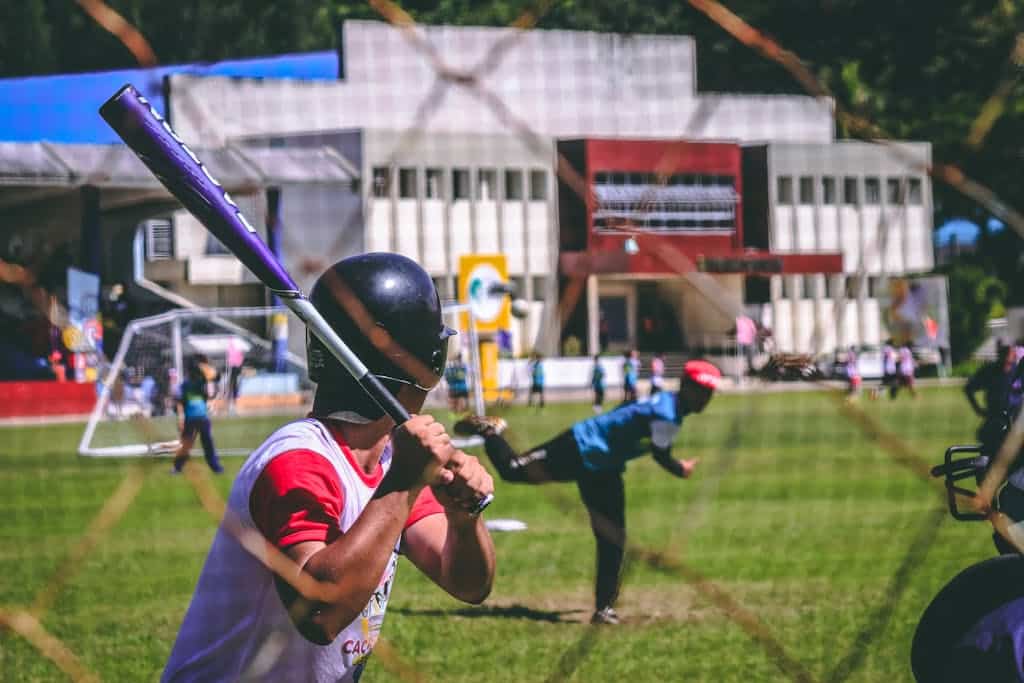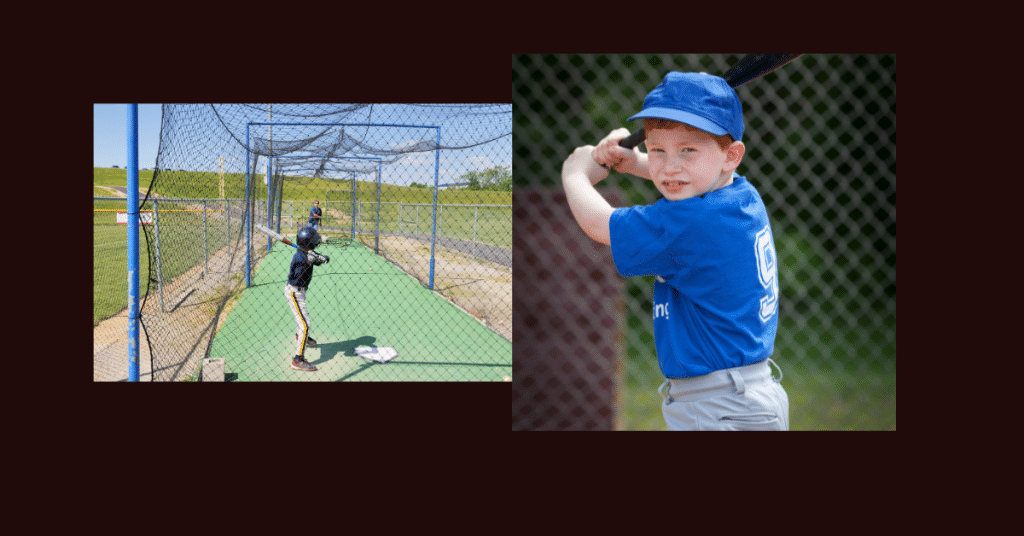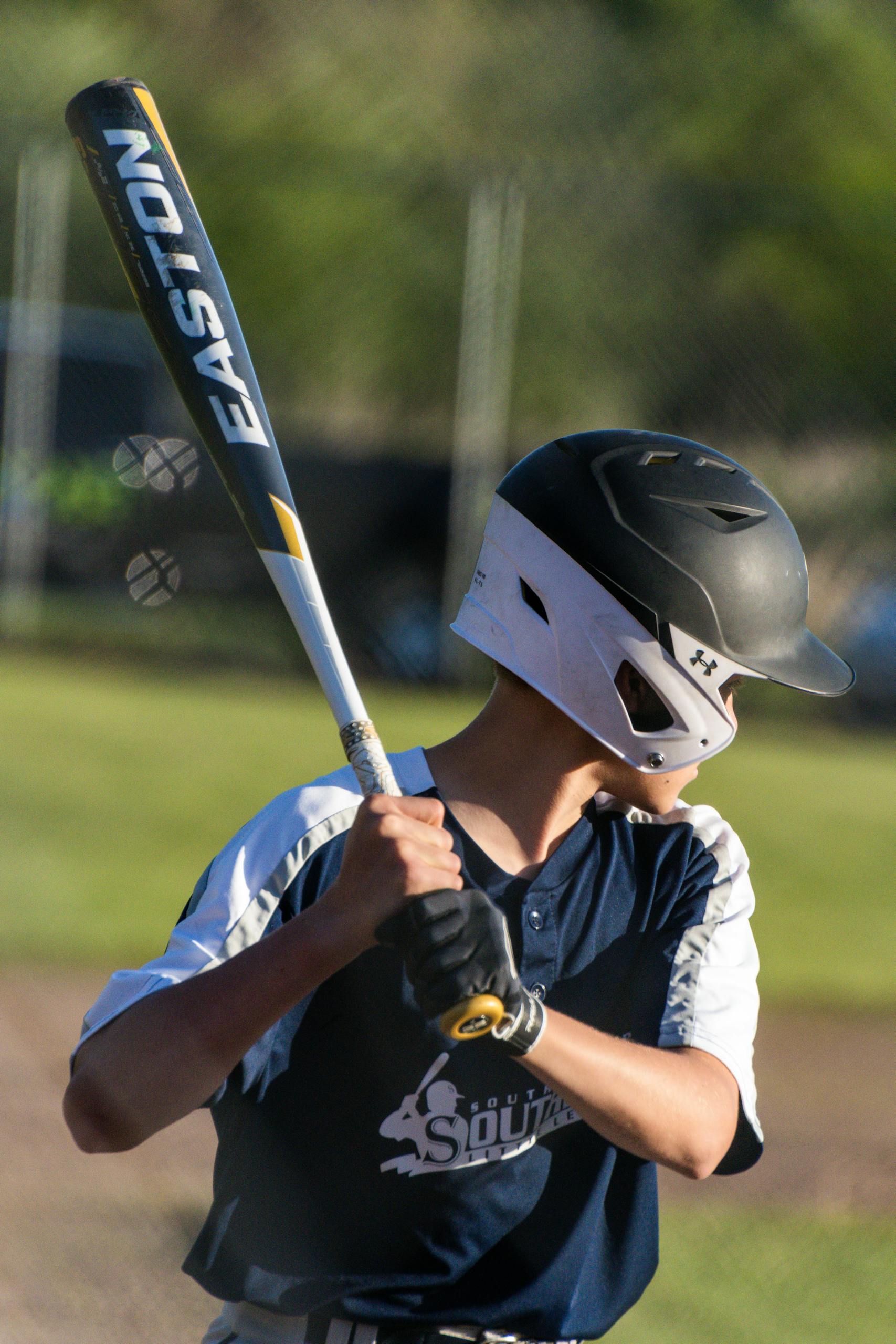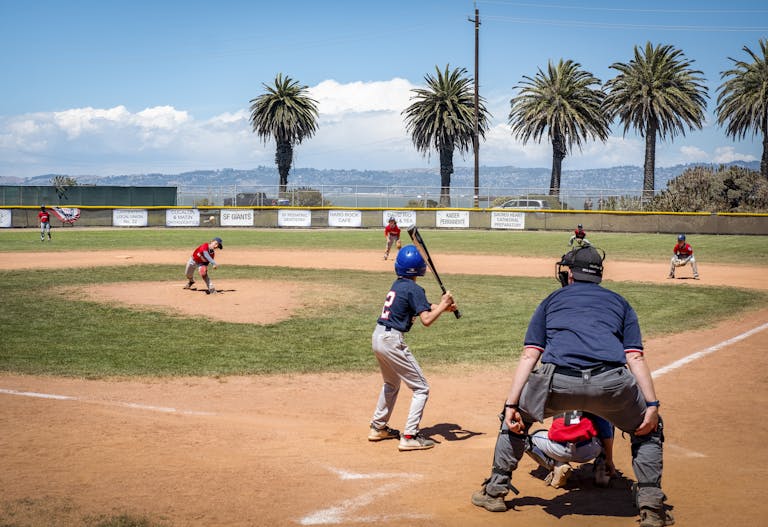7 Simple Drills to Improve Your Little Leaguer’s Batting Average (2025) is the ultimate guide for Little League coaches striving to enhance their players’ performance at the plate.
In the ever-evolving world of baseball, mastering the fundamentals remains the cornerstone of success. These drills are specifically crafted to sharpen batting skills by focusing on precision, power, and consistency.
Whether you’re aiming to boost your team’s hitting stats or seeking fresh, engaging ways to structure practices, this guide offers practical solutions designed to deliver noticeable improvements.
By blending traditional techniques with cutting-edge strategies, these drills are your go-to resource for helping young athletes excel at the plate.
What Are The 7 Simple Drills to Improve Your Little Leaguer’s Batting Average?
1. Tee Work
Place a batting tee at different positions around the plate—inside, middle, and outside—and adjust its height to simulate various pitch locations.
Focus on proper stance, bat path, and contact point with each swing. This drill is essential for developing a consistent swing and improving bat control.
As a Little League coach, you have the vital task of building your players’ confidence and skills from the ground up.
Tee work offers a strong foundation for hitting, emphasizing core fundamentals like stance, swing mechanics, and consistent ball contact.
Start with the stance. Encourage players to find a comfortable position that promotes balance and power.
Feet should be shoulder-width apart, knees slightly bent, and weight evenly distributed. This setup creates a stable base for an effective swing.
When it comes to swing mechanics, remind players to keep their eyes on the ball, rotate their hips, and follow through.
Success in hitting isn’t about swinging harder but swinging smarter—using technique to generate power efficiently.
The batting tee is an invaluable tool for honing these skills. It provides a static target, ideal for focusing on mechanics without the pressure of a live pitch.
Adjusting the tee’s height and position challenges players to hit across different strike zones, boosting their adaptability and ability to handle diverse pitch locations.

7 Simple Drills to Improve Your Little Leaguer’s Batting Average

2. Soft Toss from the Side
In this drill, a coach tosses balls from a 45-degree angle, targeting the batter’s front hip or belt buckle area.
It’s designed to enhance timing, hand-eye coordination, and adaptability to various pitch locations—all critical skills for successful hitting.
Soft toss from the side is a powerful way to improve your players’ hitting mechanics and confidence.
Unlike front toss or tee work, this drill simulates a more realistic trajectory, helping hitters track the ball from an angle that mimics live pitching.
Mastering this exercise can significantly boost players’ ability to make solid contact, laying the groundwork for consistent performance at the plate.
To execute this drill effectively, position yourself slightly in front and to the side of the batter, ensuring you’re safely out of their swing path.
Gently toss the ball toward the strike zone, aiming for a location that challenges the hitter to focus on making clean, consistent contact.
Encourage your players to concentrate on their form: keep their eyes on the ball, maintain a balanced stance, and complete their swing with proper follow-through.
Repetition is key, but variety matters too—adjust the speed and height of your tosses to simulate different pitch types and help hitters refine their timing and recognition skills.
As a coach, your feedback is invaluable. Positive reinforcement builds confidence and keeps players motivated, while constructive guidance helps them fine-tune their skills.
Celebrate their progress, and you’ll nurture hitters who feel empowered to face any pitcher with poise and precision.

.

3. Short Toss Distance Game
The Short Toss Distance Game is a progressive batting drill designed to improve timing, consistency, and the ability to hit up the middle or to the opposite field.
By gradually increasing the distance of soft tosses, this drill helps young hitters develop a better feel for timing and pitch recognition.
How it Works:
- Start Close: Begin with tosses from a short distance, about 10 feet from home plate.
- Progress Gradually: Move to 15–18 feet, and then to a farther distance where tosses remain accurate.
- Maintain Accuracy: Toss balls underhand, aiming for the top of the arc to align with the batter’s intended contact point.
Key Benefits:
- Batters learn to adjust their timing as the distance increases, simulating various pitch speeds.
- The drill promotes consistent, high-quality swings by mimicking real game scenarios in a controlled environment.
- Players practice hitting up the middle and to the opposite field, key skills for well-rounded hitters.
Coaching Tips:
- Limit each session to 5–7 high-focus repetitions to maintain swing quality and prevent fatigue.
- Communicate pitch locations (inside, outside, or middle) to help batters make adjustments.
- Emphasize maintaining a proper stance and approach, as if facing live pitching.
By incorporating the Short Toss Distance Game into practice routines, young players can build confidence and develop the timing and precision needed for game success.


4. One-Handed Hitting
The One-Handed Hitting drill isolates and strengthens each hand’s role in the swing, promoting a short, powerful stroke.
It’s an excellent exercise for improving bat control, swing mechanics, and overall power.
Drill Instructions:
- Start by swinging with only the bottom hand on the bat, tucking the top hand under the opposite armpit for stability.
- Switch to swinging with only the top hand, focusing on guiding the bat through the zone.
- Perform the drill using a tee, soft toss, or front toss to create variety and challenge.
Key Benefits:
- Enhanced Bat Control: Helps batters develop better barrel awareness and precision.
- Improved Mechanics: Reinforces a compact swing path and proper turning of the knob.
- Strength Development: Builds strength in each hand individually, resulting in a more powerful combined swing.
- Swing Awareness: Helps players feel the proper motion, including palm positioning and extension through the ball.
Coaching Tips:
- During bottom-hand drills, encourage driving through the ball with proper extension.
- For top-hand drills, emphasize leading with the elbow to guide the bat through the zone.
- Use a mini bat or choke up on a regular bat to simplify the drill for younger players or beginners.
- Focus on maintaining a consistent swing path and avoid premature wrist rolling.
By incorporating One-Handed Hitting drills into regular practice, players can develop the strength, control, and mechanics needed for a more powerful and effective swing.


5. Rhythm Step Drill
The Rhythm Step Drill is a dynamic hitting exercise designed to enhance a batter’s timing, rhythm, and overall swing mechanics.
It’s an effective tool for building confidence and fluidity at the plate.
Drill Instructions:
- Begin with the batter in their normal stance.
- Have the batter rock back and forth four times, initiating forward movement with each rock.
- On the fourth motion, the tosser delivers the ball.
- The batter focuses on maintaining rhythm while executing their swing.
Key Benefits:
- Improves Timing: Synchronizes the batter’s movements with the ball’s arrival, sharpening their reaction skills.
- Enhances Rhythm: Encourages a smoother, more fluid swing through controlled rocking motions.
- Activates Lower Body: Teaches hitters to generate power from their legs and core, improving overall mechanics.
- Reduces Stiffness: Helps loosen up rigid hitters, promoting a more relaxed and natural swing.
- Develops Weight Transfer: Reinforces proper weight shift from the back foot to the front during the swing.
Coaching Tips:
- Focus on maintaining a consistent tempo during the rocking motion for steady rhythm.
- Encourage the batter to keep their upper body relaxed to promote fluidity.
- Vary pitch locations to help hitters adjust to different pitch types.
- Incorporate this drill as a pre-game warm-up to help batters find their rhythm and confidence at the plate.
By making the Rhythm Step Drill a regular part of practice, hitters can significantly enhance their timing, fluidity, and overall hitting performance, preparing them for success in game situations.


6. Contact Point Practice
The Contact Point Practice drill is designed to enhance a batter’s consistency and precision at the moment of contact with the ball.
This drill is great for improving muscle memory and body awareness during the swing.
Drill Instructions:
- The batter assumes their normal stance at the plate.
- They “freeze” at the moment where they would make contact with the ball, focusing on their body alignment and bat angle.
- The batter then gets comfortable in this position, ensuring the alignment is correct.
- After holding the freeze, they load back and swing when the ball is pitched.
Key Benefits:
- Enhances Muscle Memory: Reinforces the ideal contact position, helping the batter repeat it consistently.
- Improves Swing Consistency: Develops a consistent swing path and proper bat angle at the point of contact.
- Increases Visual and Physical Awareness: Helps batters feel the correct contact point and visualize their ideal swing.
- Boosts Body Positioning Awareness: Increases understanding of how body positioning affects contact and swing effectiveness.
Coaching Tips:
- Start with a tee or soft toss to eliminate timing issues and let the batter focus on the contact point.
- Vary pitch locations (inside, middle, outside) to practice hitting different contact points.
- Stress the importance of a consistent swing path through the contact zone.
- Encourage batters to focus on driving through the ball, not just making contact.
By incorporating this drill regularly, batters can improve their swing mechanics, leading to more consistent and effective contact, and ultimately enhancing their overall hitting performance.


7. Rapid Fire Soft Toss
The Rapid Fire Soft Toss drill is designed to boost a batter’s reaction time, consistency, and ability to maintain proper mechanics under pressure.
It’s great for simulating high-intensity, fast-paced situations that batters face in games.
Drill Instructions:
- The hitter starts in a wide stance, with their torso pre-loaded and ready to react.
- A partner tosses 3-4 balls in quick succession from an angle.
- The batter must hit each ball, resetting quickly between swings.
- Each round consists of 3-4 tosses, with short breaks between rounds to maintain focus and energy.
Key Benefits:
- Enhances Reaction Time and Focus: Helps batters sharpen their ability to react quickly to pitches.
- Improves Swing Consistency: Promotes repeatable mechanics even under pressure.
- Strengthens Core Power: Forces hitters to engage their core to generate power with each swing.
- Increases Bat Speed and Control: Quick repetitions help improve bat speed and overall control.
Coaching Tips:
- Ensure the tosser maintains a consistent, smooth tossing motion despite the fast pace.
- Limit each round to 3-4 balls to avoid fatigue and maintain swing quality.
- Emphasize the importance of resetting quickly between swings to stay in rhythm.
- Instruct hitters to focus on making clean contact, stopping their swing at the point of contact before resetting for the next pitch.
By incorporating the Rapid Fire Soft Toss drill into regular practice, hitters can develop the ability to make quick adjustments, improve their reaction time, and maintain consistent mechanics, preparing them for game situations where timing is critical.


Frequently Asked Questions
How can I track my players’ progress?
You can track progress through regular batting practice sessions and by recording key stats such as batting averages, on-base percentage, and the number of solid hits made..
How long should each drill take?
Each drill is designed to be completed in 10-15 minutes, making them easy to integrate into a typical practice session.
How can I keep my players engaged during these drills?
To keep practices fun, introduce friendly competitions, offer positive reinforcement, and vary the drills to maintain their interest and motivation.
What age group is this guide suitable for?
This guide is perfect for Little Leaguers aged 6-12, providing drills that cater to various skill levels.
Can these drills be done at home?
Yes! Many of the drills require minimal equipment, so players can practice them at home with a parent or guardian.
What should I focus on during these drills?
Focus on proper technique, building muscle memory, and encouraging a positive attitude. The goal is not just to hit the ball but to make consistent, powerful contact.
7 Simple Drills to Improve Your Little Leaguer’s Batting Average
Conclusion
Improving your Little Leaguers’ batting averages isn’t just about repetitive practice—it’s about making every session meaningful and enjoyable. As coaches, your impact goes beyond the diamond; you’re fostering confidence, teamwork, and a deep love for the game. By incorporating these seven simple drills into your practice routines, you’ll not only enhance your players’ skills but also create a positive, supportive environment that celebrates growth and perseverance. Stay patient, keep the drills fresh, and watch both your team’s batting averages and their smiles flourish. Here’s to a season of powerful hits and unforgettable memories!
Start integrating these 7 simple drills into your practice sessions today, and watch their confidence—and their skills—grow. Don’t wait—give your Little Leaguers the tools they need for success and sign up for more expert coaching tips, drills, and insights directly in your inbox. Let’s make this season one to remember!







